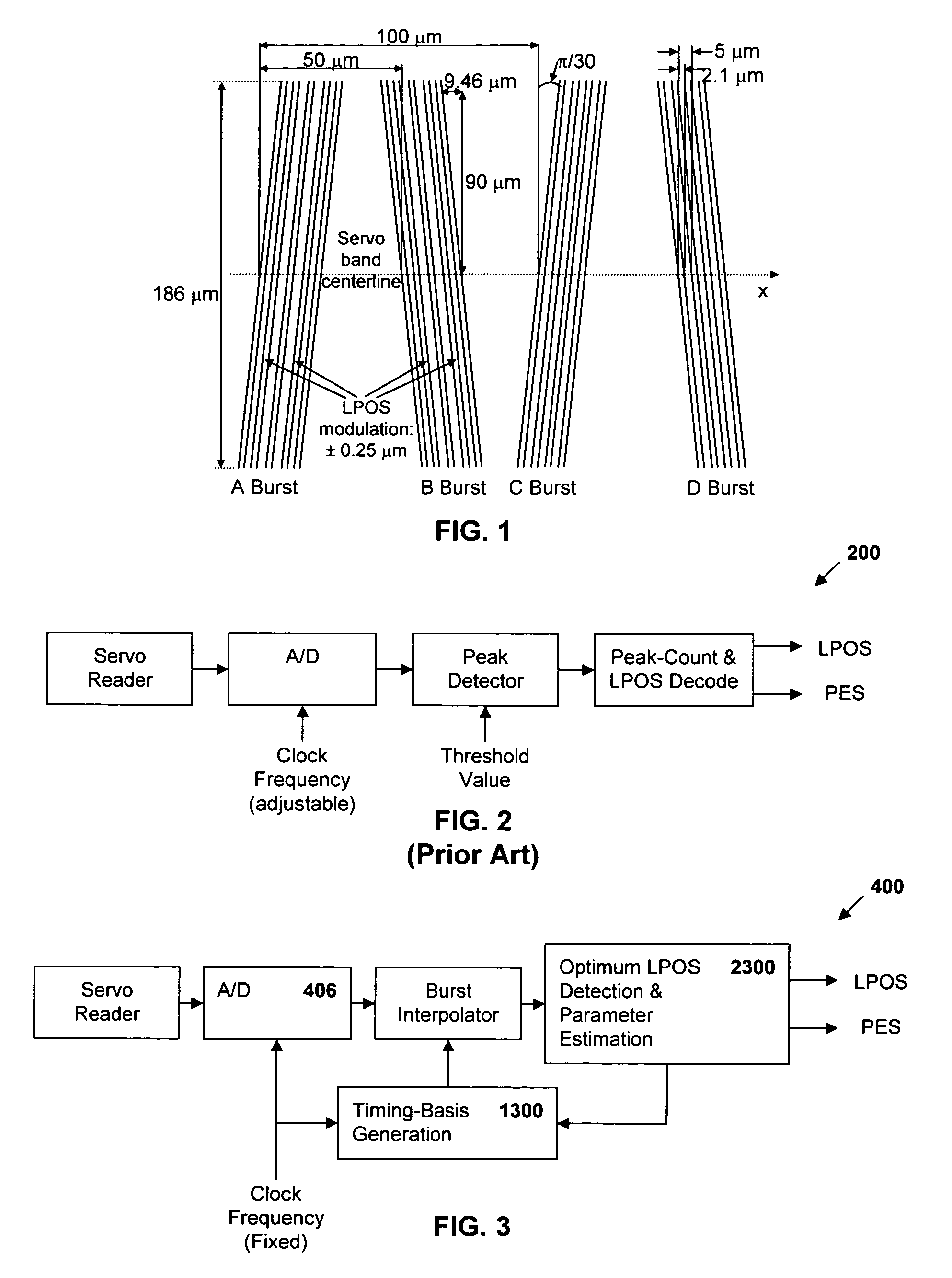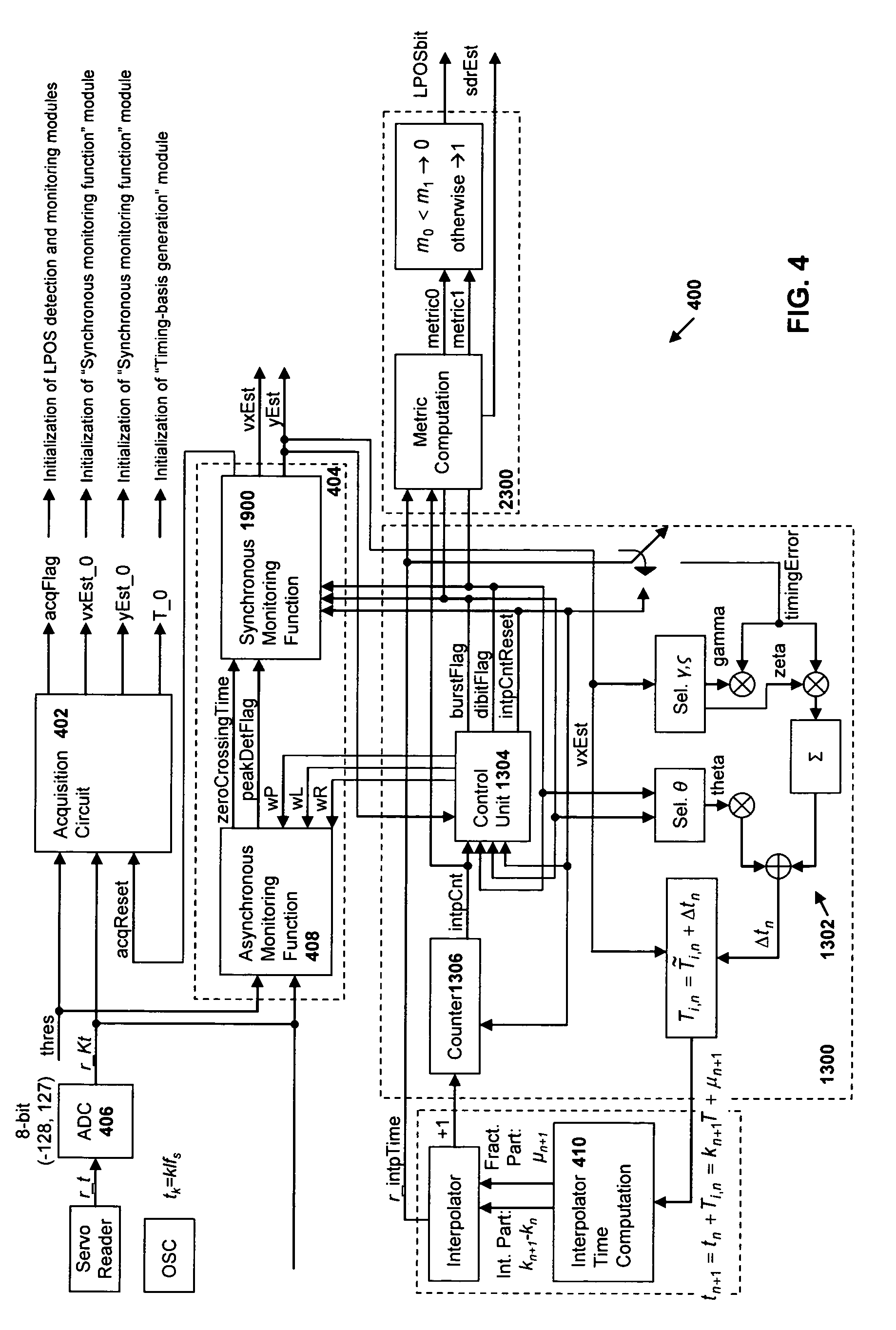Synchronous servo channel for longitudinal position detection and position error signal generation in tape drive systems
a technology of synchronous servo channels and longitudinal positions, applied in the direction of maintaining head carrier alignment, digital recording, instruments, etc., can solve the problems of inability to monitor time evolution, measure reliability, and inability to reliably detect lpos, so as to improve the reliability of servo channels
- Summary
- Abstract
- Description
- Claims
- Application Information
AI Technical Summary
Benefits of technology
Problems solved by technology
Method used
Image
Examples
Embodiment Construction
Synchronous Servo Channel Architecture
[0040]With the architecture of the present invention, the dynamic interpolator allows any sampling rate at the detector input, with the only limitation arising because of potential aliasing effects. For example, in the case of a distance between magnetic transitions given by Lp=2.1 μm, the maximum velocity achievable without aliasing effects with a 15 MHz fixed ADC clock is νmax=2.1×(15 / 2)=15.75 m / s. In this case the equivalent sampling frequency after the burst interpolator for achieving a resolution of 0.05 μm is equal to 315 MHz. Note that this would be the required fixed sampling frequency in an asynchronous architecture.
[0041]FIG. 3 illustrates the basic building blocks of the synchronous LPOS detection architecture 400 of the present invention. Because the number of samples per unit of length is fixed and independent of velocity after the burst interpolator, a matched filter approach can be employed for optimum detection of PPM in the pres...
PUM
 Login to View More
Login to View More Abstract
Description
Claims
Application Information
 Login to View More
Login to View More - R&D
- Intellectual Property
- Life Sciences
- Materials
- Tech Scout
- Unparalleled Data Quality
- Higher Quality Content
- 60% Fewer Hallucinations
Browse by: Latest US Patents, China's latest patents, Technical Efficacy Thesaurus, Application Domain, Technology Topic, Popular Technical Reports.
© 2025 PatSnap. All rights reserved.Legal|Privacy policy|Modern Slavery Act Transparency Statement|Sitemap|About US| Contact US: help@patsnap.com



